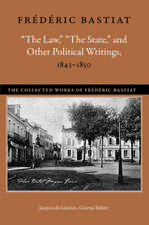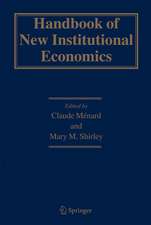Recent Developments in Applied Demand Analysis: Alcohol, Advertising and Global Consumption
Autor E.A. Selvanathan, Kenneth W. Clementsen Limba Engleză Paperback – 30 dec 2011
Preț: 395.85 lei
Nou
Puncte Express: 594
Preț estimativ în valută:
75.75€ • 80.100$ • 63.16£
75.75€ • 80.100$ • 63.16£
Carte tipărită la comandă
Livrare economică 18 aprilie-02 mai
Preluare comenzi: 021 569.72.76
Specificații
ISBN-13: 9783642852077
ISBN-10: 3642852076
Pagini: 428
Ilustrații: XXVII, 396 p.
Dimensiuni: 155 x 235 x 22 mm
Greutate: 0.6 kg
Ediția:Softcover reprint of the original 1st ed. 1995
Editura: Springer Berlin, Heidelberg
Colecția Springer
Locul publicării:Berlin, Heidelberg, Germany
ISBN-10: 3642852076
Pagini: 428
Ilustrații: XXVII, 396 p.
Dimensiuni: 155 x 235 x 22 mm
Greutate: 0.6 kg
Ediția:Softcover reprint of the original 1st ed. 1995
Editura: Springer Berlin, Heidelberg
Colecția Springer
Locul publicării:Berlin, Heidelberg, Germany
Public țintă
ResearchCuprins
1 The Economic Theory of the Consumer.- 1.1 Introduction.- 1.2 Demand Analysis Without Utility Theory.- 1.3 The Consumer’s Maximization Problem.- 1.4 Specified Forms of the Utility Function.- 1.5 Preference Independence.- 1.6 Specifying the Form of the Indirect Utility Function.- 1.7 Specifying the Form of the Cost Function.- 1.8 Working’s Model.- 1.9 Divisia Indexes.- 1.10 Barten’s Fundamental Matrix Equation.- 1.11 Solving the Matrix Equation.- 1.12 A Differential Demand System.- 1.13 Derivations and Extensions.- 1.14 Examples of Differential Demand Equations.- 1.15 The Rotterdam Model.- 1.16 Simpler Demand Systems.- 1.17 An Even Simpler Demand System.- 1.18 Working’s Model Further Considered.- 1.19 The Behaviour of Implied Income Elasticities.- 1.20 More on Substitutes and Complements.- 1.21 Preference Independence and Block Independence.- 1.22 The Demand for Groups of Goods Under Block Independence.- 1.23 Conditional Demand Equations.- 1.24 Derivations of Conditional Demand Equations.- 1.25 The Conditional Version of the Rotterdam Model.- References.- 2 Empirical Regularities in Consumption Patterns.- 2.1 Introduction.- 2.2 OECD Consumption.- 2.3 Divisia Variances.- 2.4 Engel’s Law.- 2.5 Homogeneity and Symmetry.- 2.6 The Validity of Preference Independence.- 2.7 Are Tastes Constant?.- 2.8 The Frisch Conjecture.- 2.9 Some Further International Consumption Data.- 2.10 The Linear Expenditure System.- 2.11 More on Working’s Model.- 2.12 A World Demand System.- References.- 3 Data-Analytic Techniques for Consumer Economics.- 3.1 Introduction.- 3.2 The Basic Data.- 3.3 Divisia Indexes.- 3.4 Scatter Plots.- 3.5 Further Estimates of the Income Flexibility.- 3.6 Derivations.- 3.7 Comments on Assumptions.- References.- 4 Hypothesis Testing in Demand Analysis.-4.1 Introduction.- 4.2 The Demand Model.- 4.3 Homogeneity.- 4.4 Symmetry.- 4.5 Monte Carlo Testing.- 4.6 Homogeneity Revisited.- 4.7 Symmetry Revisited.- 4.8 Preference Independence Revisited.- 4.9 Specifying the Covariance Matrix.- 4.10 The Implied Demand Elasticities.- 4.11 More on the Elasticities.- 4.12 Conclusion.- Appendices to Chapter 4.- References.- 5 Undersized Samples and Demand Analysis.- 5.1 Introduction.- 5.2 Working’s Model.- 5.3 Estimation Procedures.- 5.4 Alternative Covariance Matrices.- 5.5 A Simulation Experiment.- 5.6 More Simulations.- 5.7 Hypothesis Testing.- 5.8 Concluding Comments.- Appendices to Chapter 5.- References.- 6 The Demand for Alcoholic Beverages.- 6.1 Introduction.- 6.2 The Data.- 6.3 The Effects of Relative Prices and Income: A Preliminary Analysis.- 6.4 Testing Homogeneity and Symmetry.- 6.5 The Utility Interactions Among Beverages.- 6.6 The Second Version of the Demand Model.- 6.7 How Reliable are the ML Estimators?.- 6.8 The Goodness of Fit of the Model.- 6.9 The Demand for Alcohol as a Whole.- 6.10 On Substitutes and Complements.- 6.11 Comparison with Other Studies.- 6.12 Concluding Comments.- References.- 7 Advertising and Consumption: A Theoretical Analysis.- 7.1 Introduction.- 7.2 Advertising and Consumption.- 7.3 The Comparative Statics of Advertising.- 7.4 Two Special Cases.- 7.5 Indexes of Advertising.- 7.6 A Differential Demand System With Advertising.- 7.7 Derivations.- 7.8 Block Independence.- 7.9 A Groupwise Index of Advertising.- 7.10 The Composite Demand Equation.- 7.11 Conditional Demand Equations.- 7.12 Conditional Demand Equations in Absolute Prices.- 7.13 The Unconditional Demand Equations.- 7.14 More Derivations.- References.- 8 The Effects of Advertising on Alcohol Consumption: An Empirical Analysis.- 8.1Introduction.- 8.2 The UK Alcohol Advertising Data.- 8.3 Divisia Indexes of Alcohol Advertising.- 8.4 The Extended Generalized Rotterdam Model.- 8.5 The Corrected Quantity-Advertising Indexes.- 8.6 Estimates of the Corrected Quantity-Advertising Correlation.- 8.7 Estimates of the Elasticity of Marginal Utility.- 8.8 Estimates of the Conditional Demand Equations.- 8.9 Advertising in Stock Form.- 8.10 Is Advertising Predetermined?.- 8.11 The Unconditional Elasticities.- 8.12 Previous Studies.- Appendix to Chapter 8.- References.- 9 Rotterdam Model in Forecasting: An Application to the Alcohol Market.- 9.1 Introduction.- 9.2 The Rotterdam Demand Model.- 9.3 Block Structure of Alcohol Market.- 9.4 The Forecasting Procedure.- 9.5 The Forecasts.- 9.6 The Bootstrap Standard Errors of the Forecasts.- 9.7 Forecasts versus Observed.- References.- 10 Aggregation and Consumer Demand.- 10.1 Introduction.- 10.2 Aggregation Over Commodities.- 10.3 The Convergence Approach to Linear Aggregation.- 10.4 Demand Equations in Absolute Prices.- 10.5 Derivations.- 10.6 The Aggregation Bias of the Slutsky Coefficients.- 10.7 Demand Equations in Relative Prices.- 10.8 Derivation of the Relative Price Version of the Macro Demand Model ...- 10.9 The Remainder Terms.- 10.10 Properties of the Macrocoefficients.- References.

















